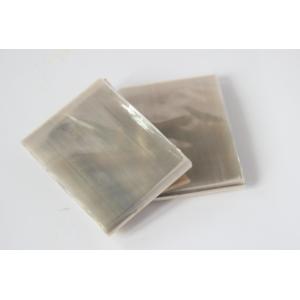
Common dry dialysis membranes (American combined carbated, glycerol coated, treated before use)
Technical Parameters
1. PH stability range: 5-9.
2. Pollutant level: sulfide < 0.3%; Heavy metal<50ppm.
3. Chemical compatibility: Compatible with many salts such as CaCL2, (NH4)2SO4 or aqueous and organic solvents commonly used in molecular biology and enzymology, such as isopropanol, ethanol and acetone.
4. Temperature resistance: It can be boiled and autoclave.
5. Potein adsorption: The adsorbed protein content per gram of dialysis membranes was less than 1ng.
Pre-processing
1. Cut the Dialysis membranes into an appropriate length of 10-20cm.
2. Boil the Dialysis membranes for 10 minutes in 2% (w / v) NaHCO3 and 1mmol/L EDTA (pH 8.0) solution.
3. Wash the Dialysis membranes thoroughly with distilled water.
4. Boil the Dialysis membranes for 10 minutes in 1mmol/L EDTA (pH 8.0) solution.
5. After cooling, store at 4 ℃ and ensure that the Dialysis membranes is always immersed in solution. From this step, the later operation needs to wear gloves.
6. Clean the interior Dialysis membranes with distilled water before use.
*The experimental requirements are not strict can be used in the following simple treatment method: Boil in boiling water for 10 min and ready for use.
Application
Remove salts, surfactants, and solvents
Buffer displacement and PH adjustment of the sample solution
Concentrate the proteins, polypeptides, and antibodies
DNA electroelution
Preparation of diluted proteins before electrophoresis
Elimination of small-molecule pollutants
Extracted and purified of tissue culture
Combined research
Note:Product information may be optimized and upgraded. Please refer to the actual label information for accuracy.


 English
English
 中文
中文



